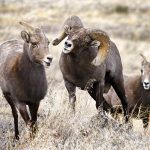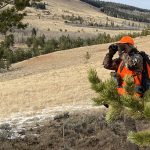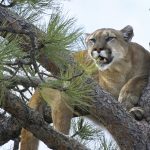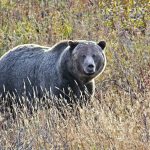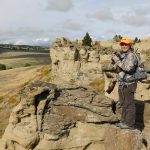Getting as close as possible to a game animal is an exciting and rewarding way to hunt.
Photo above: In spot-and-stalk hunting, you’ll spend a significant amount of time glassing. Good optics are a necessity. Photo by Kelly Ross.
A few years back, a friend and I were hunting pronghorn antelope in southern Alberta. We were excited to finally be out on opening morning, glassing the open plains for “speed goats” after eight long years of applying in the draw. Lots of advance planning and scouting had been done so that we could make the most of this rare opportunity, and the first light of day found us glassing an area where we had seen a number of good bucks.
It didn’t take long to locate a herd of antelope with several bucks, including a couple of shooters, so we immediately began working on a strategy to get us within decent shooting range. Unfortunately, while glassing the terrain for a suitable route that would allow us to stay out of sight of the antelope on our approach, I soon found that we were not the only ones interested in these bucks. I could see a pickup parked in the distance and my binocular quickly picked up a couple of hunters lying prone in the sagebrush a few yards from their truck.
There was no way for us to proceed as planned, since the other hunters were between us and the antelope, on the exact route we would have used for our stalk, so we decided to sit tight and wait to see what the other hunters did. If they put a stalk on the antelope and bumped them, there was a good chance the herd might follow the ridgeline we were glassing from and give us a chance at one of the bucks.
We waited for a bit, anticipating that the hunters would follow the same route we had picked out, which would put them within a couple of hundred yards of the antelope, but the minutes clicked by and there was no sign of movement. My hunting partner had just leaned towards me and whispered, “I wonder when they are going to get moving?” when a shot rang out. We looked at each other in disbelief as the antelope instantly kicked into overdrive and began running toward us. Two more shots from the other hunters helped speed them on their way, and we just watched in silence as the antelope blew by us at warp speed.
The hunters were at least 700 to 800 yards from the antelope when they shot–way past what I would consider a “reasonable” shooting distance. All I could do was shake my head. Why the hunter attempted to take a shot at that distance was beyond me, as there was an obvious seasonal runoff depression that would easily have allowed them to get much closer to the bucks while staying out of sight.
With the antelope herd speeding toward the next county, my buddy and I walked back to the truck so we could go glass some other areas where we had seen antelope. On the way we had to drive by the other hunters, so we stopped to talk to them for a few minutes. They had been unaware that they had an audience until they saw our truck approaching, and the hunter who had done the shooting seemed to be genuinely surprised at the fact that he had missed the buck he had selected.
I asked why they hadn’t tried to get closer by following the dry creek bed and it was immediately apparent that they had not even contemplated the idea of getting closer. A rangefinder had been used to determine the distance. The shooter’s custom rifle, chambered in one of the newer 6.5mm cartridges and topped with a big, expensive scope, completed the picture. He had dialed the scope in for the distance displayed on the rangefinder, and just couldn’t understand why the pronghorn buck he selected wasn’t lying in the sagebrush.
After forty-five years of guiding big-game hunters, I have seen a lot of fads come and go. Improvements in technology have changed many things in our lives, and that applies to hunting as well. Virtually everything we use in the game fields has seen significant advances in performance and most recently this has resulted in a proliferation of rifles, scopes, and ammunition that are capable of making a 1,000-yard shot in a hunting scenario.
There is no doubt that hunters have always been fascinated with the idea of being able to take big game at long range, so it was no surprise to see many hunters jump into buying long-range shooting equipment. There are also many long-range shooting schools operating these days and they are keeping busy, but the majority of hunters who are getting into the long-range hunting game are not taking the courses offered by these schools.
The simple fact of the matter is that vast numbers of hunters are not experienced enough to be shooting at the distances we see game taken at in the various long-range shooting videos and hunting shows on the internet and outdoor TV channels. That said, the marketing and promotion certainly has caught a lot of people’s attention.
Unfortunately, as the long-range interest has gained momentum, I have seen a definite decrease in hunters’ skills at a number of things that we used to do as a matter of course. I see very few hunters who know how to use a compass or use the information obtained from topographic maps and apply it to the terrain around them. I have also observed that, when a targeted big-game animal is spotted, the tendency is to try to take a shot from where they are, with little or no thought given to attempting to execute a stalk and get closer to the animal. It would seem that many hunters either do not know how, or have simply chosen not to bother with stalking, a skill that has traditionally been inherent to hunting.
As a young lad, I was taught that a hunter should try to stalk as close as possible to a big-game animal in order to be certain of placing a shot as precisely as possible. The range at which you stop stalking and start shooting varies from person to person, depending on their shooting abilities and confidence in making the shot, but there is more to it than just the ability to pull the trigger and end the hunt. Stalking in as close as you can without being detected by your quarry gives you an adrenaline rush and significantly adds to the thrill of the hunt.
While I am a staunch advocate of learning how to shoot properly and practicing as often as possible, I also believe that knowing how to stalk big game is one of the most important skills a hunter can possess. Every situation is different, to be sure, but following a few basic rules will greatly improve your ability to pull off a successful stalk.
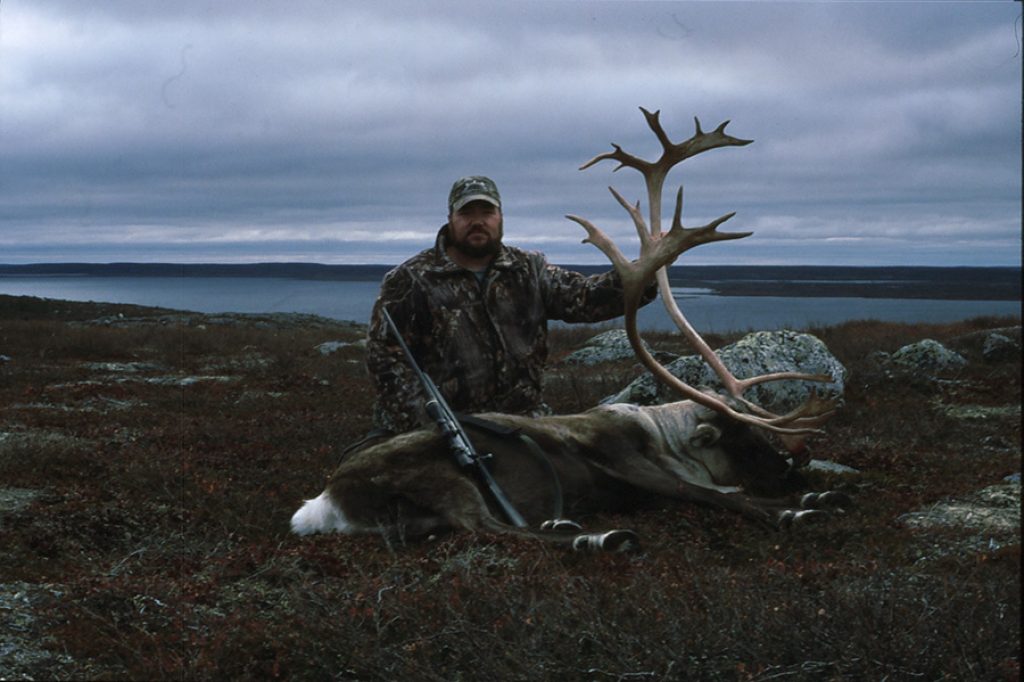
Photo by Kelly Ross
Equipment
There really is no rocket science involved in your choice of gear and equipment for spot- and-stalk hunting. You need to wear quiet, comfortable clothing and footwear that suits the terrain and weather you will be hunting in. Camouflage clothing is not a bad idea, but not a necessity; you should just be sure to wear clothing that breaks up your outline and helps you blend in with the surroundings. My success at stalking game years ago was not hampered by the fact that I was wearing jeans and a plaid jacket instead of the latest camo patterns being marketed these days.
Obviously, you will have selected the appropriate rifle/scope combination, chosen your ammunition carefully, and practiced faithfully with your shooting tools prior to the hunt. The equipment that is exceedingly important and most often neglected however, is the very best binocular you can afford. A good spotting scope may also be a good idea, especially when hunting big-game animals that usually have restrictions with regards to the size of their headgear, like sheep and goats.
Glassing
In a nutshell, stalking revolves around locating the game animal before it becomes aware of your presence, then selecting a route that will allow you to get as close as possible to your intended target without your quarry spotting or smelling you. Finally, assuming the stalk has gone off without a hitch, you will have gotten close enough to precisely place your bullet and quickly bring things to a conclusion.
The first order of business is to locate the game animal you are after. You should carefully look over the area you are hunting with the naked eye. If that fails to turn up anything obvious, it is time to dig out the bino and get to work, systematically looking at every piece of ground in front of you. Take your time and carefully examine every nook and cranny, then do it again. You will be surprised how often you will suddenly have an animal come into focus that you missed on the first go-round.
Once you are satisfied that you haven’t missed anything, you can slowly hike to another location that allows you to glass new ground. Be sure to glass along the way as new areas come into view so that you do not inadvertently spook anything.
As you are glassing, keep in mind the time of day and what sort of activity your quarry is likely to be up to. Are they likely to be feeding, or should you be looking for animals that have bedded down to chew their cud or take a nap?
Remember that when it comes to glassing and spotting game, the number one mistake that hunters make is being in a hurry. Take your time and make sure you are not missing something.
Establish What Your Target is Doing
Once you have located the animal you are after, you need to figure out what the animal is doing, or likely to do, and then plan your approach. While there is no way to plan for every possible scenario, there are general guidelines that can be helpful in deciding if and when you should attempt a stalk.
Much of it is common sense, and the more you know about your quarry, the more accurate your decisions are likely to be. If you are hunting during the breeding season, a male that has acquired a group of females is going to stick pretty close to them. If the target animal is concentrating on a particular food source, chances are they will stick fairly close to the feeding area or will return to the area to feed at the appropriate time of the day.
Animals that are traveling when you spot them may or may not offer an opportunity. Spooked animals may stop on the other side of a ridge, or they may not slow down until they are on the next mountain. This is when a good knowledge base of the species in question comes in handy.
Maybe the animal is simply moving between known feeding or bedding areas, in which case you will likely have an opportunity to plan a stalk once you have established what it is doing and allow it to get to where it is going before you begin your stalk. The time of day comes into play here. If it is the late afternoon or evening, there is a good chance feeding animals will stay in the general vicinity until dark, but if it is the morning feeding period, they are likely to head for a bedding area when they are finished feeding.
Planning Your Approach
Once you have located an animal you are interested in and decided to plan a stalk, you need to carefully mark its position. This is exceedingly important, as once you start moving the appearance of the terrain will change, sometimes significantly, from how it looked to you at your initial vantage point. Not being absolutely certain of an animal’s location is a mistake that can and will come back to haunt you.
Next, you also need try and determine the location you want to reach as a shooting position. Try to memorize both the animal’s position and the shooting position by using landmarks that will help you pinpoint those locations once you begin the stalk. I cannot stress enough how different things will look once you start moving, so it is essential that you be able to recognize where you are as you make your way along the route you chose for your stalk.
It should go without saying, but when you strategically plan your route, the goal is to try to keep the animal from seeing you while executing the stalk. Always attempt to stay out of sight by keeping something between you and the animal at all times, whether it is a ridge, rocks, or vegetation.
Since most hunters these days are packing around a GPS, a cell phone with various apps on it, or both, be sure to mark your starting point on the device as it will be a handy point of reference as you work your way along the chosen route. In hilly or mountainous terrain, you can also mark the elevation you started at and make a note as to whether the animal was higher or lower than that, giving you yet another point of reference to use in determining your position during the stalk.
Doping the Wind
Pay close attention to the wind at all times. Hiding your odor is extremely important, and that can only be achieved by constantly monitoring the wind direction. Even a faint breeze is all that is needed to carry your odor to the animal and give your position away.
While being able to stalk directly into the wind is ideal, it simply is not possible in a lot of stalking situations. Crosswinds and quartering winds will work as well, provided the wind direction seems constant. Try and remain cognizant of any variations in the terrain that could potentially deflect the wind currents in a direction that may give your scent away. Swaying grass, poplar, dandelion fluff, and dead leaves can also assist you in keeping track of the wind direction.
The wind is usually steady and relatively predictable in flat terrain, but mountainous areas can be challenging. That said, understanding how thermals work will assist you in doping the wind in steep terrain. Put simply, warm air rises and cool air falls, so expect the air currents to flow downhill at sunrise, then switch and blow uphill as the day warms. During the midafternoon there can be a period of time when the thermals tend to swirl, but as the late afternoon/evening temperatures continue to drop, the thermals will head downhill again.
To assist you in monitoring wind direction, commercially made “puffers” are available that produce little clouds of talcum powder when you squeeze them, or you can make your own by dumping some baby powder in a small cloth bag. Cattail down or fireweed fluff can be kept in a small tin or a cloth bag and a pinch tossed into the air will quickly tell you the wind direction.
Executing the Stalk
During the early stages of your stalk you can usually move fairly quickly, but once you are getting close to your intended shooting position, it is time to throttle back and move slowly. Now is not the time to make a mistake, so stay focused and be sure to watch closely for anything that could jeopardize your stalk. Watch out for other game animals that could spook at your approach and subsequently spook your intended target. Try to avoid dislodging rocks or breaking branches, anything that may alert the game to your presence.
If you’ve reached your intended shooting position but the animal is not where you thought it would be, stay put and wait it out. It is not unusual for the animal to have shifted its position slightly and it may just be behind a tree, a rock, or have bedded down. All it takes is a little patience on your part before the animal will move and give away its position.
Your scouting paid off and you located the animal you were after, carefully planned and executed your stalk to get within range, and now all you need to do to seal the deal is carefully put a bullet where it needs to go. Now is not the time to let a burst of adrenaline screw things up. Stay calm, settle into a solid shooting position, take a deep breath, slowly exhale, and gently squeeze the trigger.
Additional Considerations
On the surface, planning a stalk and then executing it seems simple enough, but there are always a lot of variables to consider. The different types of terrain and species of big game that inhabit them all offer challenges you need to overcome to be successful.
Pronghorn antelope inhabit the plains and western high desert country where their exceptional eyesight and the wide-open spaces offer unique challenges that are vastly different from those experienced by spot-and-stalk hunters after the various species of sheep and goats inhabiting the rugged mountain ranges around the globe.
Learning how to successfully stalk big game takes practice, and there are different learning curves associated with different big game species. You not only need to learn the potential pitfalls of hunting in different environments, you must learn the habits of the different species and potential hazards associated with hunting them.
I think hunters do themselves a disservice if they fail to learn and appreciate the dynamics involved with stalking big game. Stalking adds a degree of intensity and reward to the hunt that is not experienced with other hunting methods.




